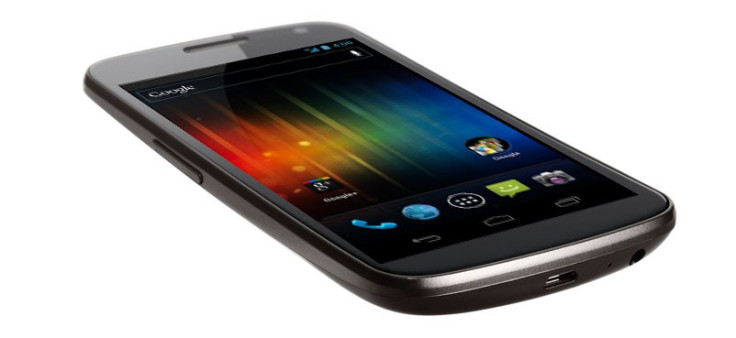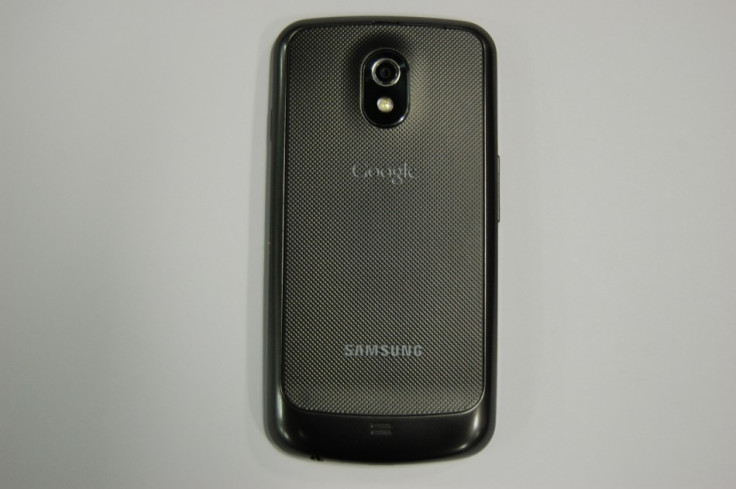Samsung Galaxy Nexus Review: Ice Scream Sandwich is as Sweet as it Sounds

Having overcome its opening volume bug, the Galaxy Nexus is finally at full health and we here at the International Business Times UK couldn't be happier. Despite not feeling as expensive in your hand as Apple's iPhone 4S, the new Nexus is an awesome piece of kit.
Available on a range of contracts, or sim-free at around £500, the Galaxy Nexus is the first smartphone to run Google's Android 4.0 Ice Cream Sandwich operating system. Since being unveiled all the way back in September, avid fans of the Android OS have had high-hopes for the device. Luckily for them, as was the case for Apple's iPhone 4S, while the Galaxy doesn't follow its namesake, boldly going were no smartphone has gone before, it does offer one of the best Android experiences on the market.
Look and Feel
Like most Samsung smartphones, the Galaxy Nexus is a plastic rather than metal affair. The resultant effect is that while it doesn't feel as "high-end" as some of its competitors it is, despite its whopping 4.65-inch screen, insanely light, weighing in a piddly 135g.
Though Samsung's choice to use plastic does make the device feel cheaper than it really is, the Galaxy Nexus is still an aesthetically pleasing phone.

The new Nexus houses the same curved shape as its predecessor and, adding an extra air of class, doesn't have front-facing buttons -- capacitive or otherwise. Outside of the power lock and volume keys on its side, the Galaxy Nexus is a button-free device, with all the user commands generally coming from on-screen inputs.
As well as looking nice, in our time with the Galaxy Nexus, the device's usability was one of the biggest features we noticed. Despite being big, very big in fact, the Galaxy Nexus doesn't feel unwieldy in your hand, in the way other large phones like the Galaxy Note can. All this is helped by the fact that the Galaxy Nexus houses the same bump at the bottom of its case and slightly rubberised battery panel as the Galaxy S2 -- adding up to make the Galaxy feel comfortable in even the smallest of hands.
Tech Spec
More important than the Galaxy Nexus' pretty-boy looks, one of the device's biggest and most noticeable assets is its screen. The Galaxy Nexus comes packed with a hefty 4.65-inch 720x1,280 pixel screen. With a pixel density of 316ppi the screen's resolution is so sharp you could slice a melon with it.
Using Samsung's AMOLED tech, the only device on the market we felt had a slightly better screen was Samsung's Galaxy S2, which uses Super AMOLED Plus tech -- the Nexus uses PenTile, meaning that if you really looked hard the display is slightly dottier.
The device's processor is also fairly nice. Packing a 1.2GHz dual-core processor the Galaxy Nexus, while not the fastest device on the market, is nippy. With the Ice Cream Sandwich upgrade the device dealt with pretty much every task we threw at it with zero lag.
Packing 16GB of internal storage -- though a 32GB version is reportedly in the works -- the Galaxy Nexus' lack of a Micro SD card slot is one of its few drawbacks. 16GB may sound a lot, but those looking to store music and videos on the device will see the storage disappear surprisingly quickly.
One amendment to note is that Samsung has removed the USB mass storage mode from the new Nexus. While this won't affect Windows PC owners, it means Mac owners will need to install additional software to access files on their phone using a USB connection.
Operating System
Without a doubt the main selling point of the Galaxy Nexus, Ice Cream Sandwich is as sweet as its name would suggest.

The key word we'd use to describe our experience using Ice Cream Sandwich is "streamlined." In the new Android 4.0 Google has completely overhauled the OS' user interface, adding a host of features designed to make Ice Cream Sandwich easier and quicker to use. Having spent a good amount of time using the new OS, we're glad to confirm that, past a few minor problems, Google has by and large achieved this goal.
One of the biggest and most obvious changes is the fact that the Menu and Search inputs have been removed, leaving only the back, Home and new multi-tasking command buttons. A feature lifted from Android 3.0, the command brings up a scrolling menu of all the applications currently running on the phone. One nice touch is the ability to kill processes simply by sweeping the app's thumbnail to the right when in the multi-task menu.
Additionally, as well as changing the operating system itself, Google has made tweaks to several of its home-grown apps, adding a new action bar. The bar sits above the app's main interface and contains icons and settings that would traditionally appear in the menu button.
Another one of the smallest, but weirdly most noticeable changes in Ice Cream Sandwich is its new typeface, Roboto. The new OS version's entire interface uses the new type-set and despite seeming like a minor addition, in our play with the new Nexus, Roboto was far clearer than the lettering used in previous Android versions.
The only problems we had using Ice Cream Sandwich came when we tried to use its Face Unlock feature. The feature is meant to allow users to register their face to the device, meaning that instead of using gestures to unlock their phone, they simply have to look into the camera. Unfortunately, the feature is incredibly hit and miss. While it's easy to register your face, the device doesn't always recognise you. At least half the times we tried to unlock the phone it failed to recognise us.
Camera and Battery
Though at first glance the numbers say otherwise -- housing a lower pixel count than its two predecessors -- the Galaxy Nexus' camera doesn't disappoint. Though carrying only a 5-megapixel unit, the Galaxy Nexus is surprisingly decent as a snapper, with the auto-focus and LED flash features combining to let its take some pretty decent photos.

Additionally, besides regular photos, the Galaxy Nexus is capable of high-definition recording, boasting both 720p and 1080p resolution options.
The Galaxy Nexus' battery life was likewise surprisingly good. Once charged, even with generous 3G use the device easily made it through the day. The only time we saw the new Nexus' battery struggle was when we turned the screen's brightness to full and kept it running videos or playing music throughout the day, at which point it was dying after about eight to nine hours.
Conclusion
In our mind the Galaxy Nexus is by far the best Android phone on the market. Being snappy, user friendly -- by Android standards -- and pretty those looking to upgrade to a new device, or make an opening leap into the Android pool should look at the device.
The changes Google has made to the OS serve to fix a number of the Android OS' core problems, making it more user friendly and easy to navigate. Additionally the large and crystal clear screen make reading text and navigating through the menus pleasant and squint free.
In short, while the Galaxy Nexus doesn't reinvent the wheel the way many fandroids wished it would, it is a solid entry that does the Nexus brand justice.
The Good
- Ice Cream Sandwich is awesome
- Looks great and is comfortable in hand
- Super-fast and great at multi-tasking
- Surprisingly decent camera and battery life
The Bad
- Plastic material makes the new Nexus feel slightly cheap
- Face Unlock doesn't always work
Overall
4.5/5 Stars
© Copyright IBTimes 2025. All rights reserved.





















